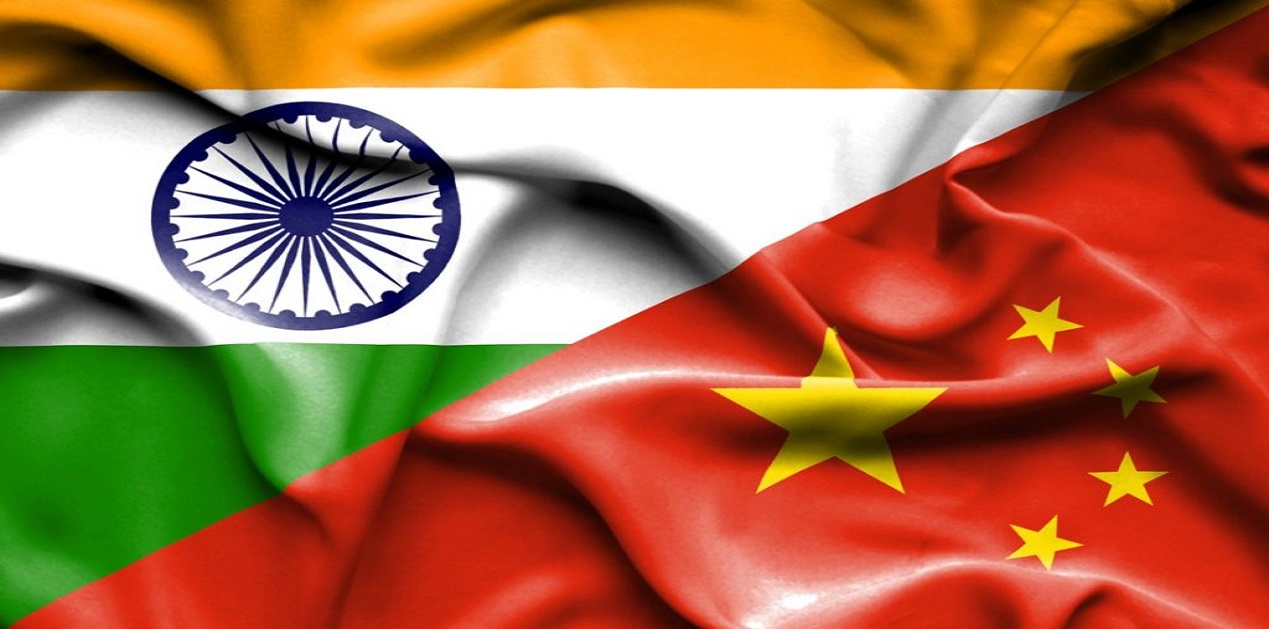A narrow definition of peace is that it is opposite to concept of war, implying where there is no war, there is peace! Again, in a social sense, peace is commonly used to mean a non-existence of war and freedom from fear of violence. The proposition is that this definition is positively problematic, as absence of war, does not always mean that there is peace.
The imagination that conjures up on contemplating war represents human violence in its most intensive form, as means of achieving political ends. Clausewitzian defined war as “an act of violence for the purpose of compelling the enemy to do what we will.” By understanding, hence, the de facto situation of war is referred to as hostilities with large-scale organized violence between sovereign political entities - States. One interesting attempt was made to fix hostilities as war with the threshold quantitatively of deaths exceeding 1000.
To effectively and favourably resolve an ongoing conflict of interests is war the policy option? War is but one of numerous conflict resolution mechanisms, others being negotiation, conciliation, mediation, arbitration, and adjudication. To effectively and favourably resolve ongoing conflicts of interests methods could also include avoiding, defeating, compromising and accommodating. Though wars have been fought over borders, there have been many peaceful resolutions. Kazakhstan and Uzbekistan peacefully achieved serious compromise through the mutual transfer of territories and a number of villages. India resolved its boundary issue of enclaves with Bangladesh by bilateral negotiations only, in a spirit of accommodation.
There was an era not too long ago, when conventional inter-state wars were declared en passé. Ukraine-Russia war has opened newer outlooks, including one of prolonged conflict war amalgamating the best of modern technology with First World War tactics! International conflict apparently still seems to include the old-fashioned war, a violent confrontation between nation states acting through their own armed forces or proxies with one state fighting outside its borders. This actually lays down that to be prepared for modern conventional war-fighting, is the deterrent to inter-state war.
Historically, in China war-fighting is expressed differently. Sun Tzu famed quote is <>i>“to win one hundred victories in one hundred battles is not the acme of skill. To subdue the enemy without fighting is the acme of skill.” Zhuge Liang, the strategist in Three Kingdoms’ period, echoed similarly, “The wise win before the fight, while the ignorant fight to win.” Likewise, in a revealing 1999 book Unrestricted Warfare, Colonels Qiao Liang and Wang Xiangsu, outlined a number of strategies. In a telling extract, they stated, “The new principles of war are no longer ‘using armed force to compel the enemy to submit to one’s will,’ but rather are ‘using all means, including armed force or non-armed force, military and non-military, and lethal and non-lethal means to compel the enemy to accept one’s interests.” The wisdom of this book is in its philosophical and strategic statement on how future warfare will be waged, which is winning without fighting.
In inter-state relations, territorial ambitions may not be sole criterion for adversarial stubbornness or obstinacy. In case of Pakistan, Jammu and Kashmir and anti-Indianness are imperative ‘national identity’ issues and the glue that binds the nation suffering from divisive multi-ethnic tendencies and separatism. For China, India is a geopolitical challenge, not in terms of comprehensive national power, but more so in its focussed growth strategy and immense potential, its soft power and attractiveness to the world especially the global south and its successful exercise of strategic autonomy. The adversarial relations with India hence emanate from geopolitical contest and competition, with a threat of coercive war, which entails placing of constraints on the sovereign Indian Government.
The two Lines – Line of Control (LOC) with Pakistan and Line of Actual Control (LAC) with China, have had no firing or cross-border operations since 2020. However, along the LOC, in 2020 and 2021, there were 99 and 73 attempts of infiltration respectively. This demands extensive deployment along the LAC. Again, in the hinterland in J&K, 232 in 2020, and 193 each in 2021 and 2022, terrorists were killed. In the same period, 131 of the security forces also gave supreme sacrifice (Data from South Asian Terrorism Portal). This necessitates the anti-infiltration and anti-terrorist grid be maintained.
India seeks ‘peace and tranquillity’ on the border with China, as seen in various readouts of interactions with China. However, since 2020, along the LAC in the most inhospitable terrain and weather conditions, much enhanced deployment is effective of Indian Army round the year. That brings to fore the omnipotent question: are the two borders – LOC and LAC with no firing, be taken as at ‘peace’? Assuredly, in the atmosphere of total distrust, the answer remains in the negative!
China has post-Independence fought three inter-State wars, in Korea, and with India and Vietnam. In all three China had limited gains, though many positive and negative lessons. Consequently, major successes in China’s expansionism came through surreptitious occupation and militarisation of South China Sea that is winning without getting involved in a shooting war. Similar correlation can be made of the operations by PLA in Eastern Ladakh in 2020, from Bottle-neck in Raki Nalla to Charding La-Nilung Nalla Junction in Demchok Nalla. This denied Indian Army domination of areas previously regularly patrolled! Again, the reported demographic encroachments in Nepal and Bhutan, lent themselves to similar ends. Without firing a shot, significant territorial advantages have been successfully achieved in ‘peacetime’ by China; wars with their assured messiness and non-guaranteed outcomes, were not even necessary.
China has greatly focussed on overall influence operations in the name of fighting in the psychological and cognitive domain. The concept of operations in the cognitive domain emerged as an extension of psychological warfare. They include spreading fake news. The Chinese Communist Party (CCP) believes the cognitive domain is imperative to achieve victory in any conflict. While kinetic attacks have a specific physical target, in the cognitive domain the target is the mind. In a telling PLA Daily article on September 8, 2022, it was stated that “Cognitive domain operations take the human brain as the main combat space, and focus on striking, weakening, and dismantling the enemy's will to fight, using human psychological weaknesses such as fear, anxiety, and suspicion as a breakthrough point, focusing on soft-kill methods to create an atmosphere of insecurity, uncertainty, and mistrust within the enemy, and increasing their internal friction and decision-making doubts.”
China in collusion with Pakistan, is undertaking cognitive warfare, by adopting a range of stratagems to win the narrative war against India, exploit political and societal fault-lines to weaken national will, and lower the morale of the nation and Armed Forces.
China, has deep pockets, and is used to buy and create influence, stifle the media and unhesitatingly steal natural resources and technology. PRC started penetrating the Indian market with its smartphones like Oppo and Xiaomi and apps like TikTok owned by Byte Dance. Estimates suggest that the PRC has invested US$4 billion in Indian start-ups in the five-year period ending March 2020. Of India’s thirty unicorns, eighteen are Chinese funded. Alibaba’s invested in digital payments platform Paytm, owning 40 per cent of Paytm. It cannot be as yet deciphered on Chinese programmed ‘bots’ as weapons to like and repost messages to create an echo chamber of manipulative posts, to inject misinformation and sow discord in the society.
In April 2016, Chinese smart-phone maker Xiaomi invested US$25 million in Indian digital media firm Hungama Digital Media Entertainment. Tencent made an investment of US$115 million in India-based music streaming service Gaana. Peoples Bank of China acquired over 1% shareholding in Housing Development Financial Corporation (HDFC). Hello App, owned by TikTok (ByteDance), bought 11000 advertisements on Facebook in 2019, which later Facebook removed because they referred to political figures, politics, and nationally-important issues. Dailyhunt (formerly Newshunt) is an Indian content and news aggregator application that provides local language content in 14 Indian languages from multiple content providers. ByteDance had invested in Dailyhunt in 2016, exited in 2022, selling its stake to a Canadian firm.
There are reports of funding by the China to a think tank in New Delhi, cyber-attacks in power sector. China also intimated Tibetan names to places in Arunachal Pradesh, supported Pakistani terrorists in UNSC, and dammed Yarlung Tsangpo. The list is not exhaustive!
In sum, apparently, there is no longer a dividing line between a state of peace and a state of war in Indian context! Wars now can be fought even without violence! India needs to prepare for formulation too:
- Create cross-government involvement in creation of strategy and enunciate common language and shared understandings of the challenge. We need to develop coordinated interagency response options, both offensive and defensive. Also create coherent command-and-control, as well as jurisdictional and philosophical boundaries between government agencies.
- India needs to create a paradigm, to detect, attribute and respond to clandestine, covert and ambiguous operations. India must remain on top of adversaries’ attempts. Better ISR and analysis, lower the threshold, earlier the detection and better the response!
- Address disinformation campaign by:
- Expanding offensive cyber capabilities in the information domain. Respond to and mitigate disinformation (and radicalisation) while simultaneously and proactively shaping the information environment. Disinformation campaigns are easier to dispute when they are first detected (and before opinions are fixated in targeted audiences).
- Build trust with local communities for fact-checking, Identify Disinformation Narratives, Assets, and Coordinated inauthentic behaviour, digital and media literacy, networking and coalition building, and international cooperation.
- Address content, actors (such as platforms) and targets of disinformation, hate speech, computational propaganda, and other harmful forms of content.
- Create Professional Tools to Comprehend Disinformation, and credible disinformation/ propaganda management mechanism. India needs to evolve a potent apex level organization for conducting cognitive operations, preferably under the NSA. The Armed Forces must raise a separate Defence Cognitive Operations Agency. India also needs a Cognitive Warfare Strategy including offensive social engineering.
In sum, does absence of war mean peace, in Indian context? India is not in ‘positive peace,’ as that denotes absence of violence. It even cannot be called ‘negative peace,’ which is ‘absence of violence and absence of fear of violence.’ Orwell’s quote in 1984 - “War is Peace” also implies peace is war. Without ascribing to disorderly terminologies of grey zone and hybrid warfare, PEACE is WAR for India, too!
(The paper is the author’s individual scholastic articulation. The author certifies that the article/paper is original in content, unpublished and it has not been submitted for publication/web upload elsewhere, and that the facts and figures quoted are duly referenced, as needed, and are believed to be correct). (The paper does not necessarily represent the organisational stance... More >>
Image Source: https://sundayguardianlive.com/news/communist-chinas-influence-operations-indias-think-tanks-politicians-intellectuals-academia-media-targets











Post new comment